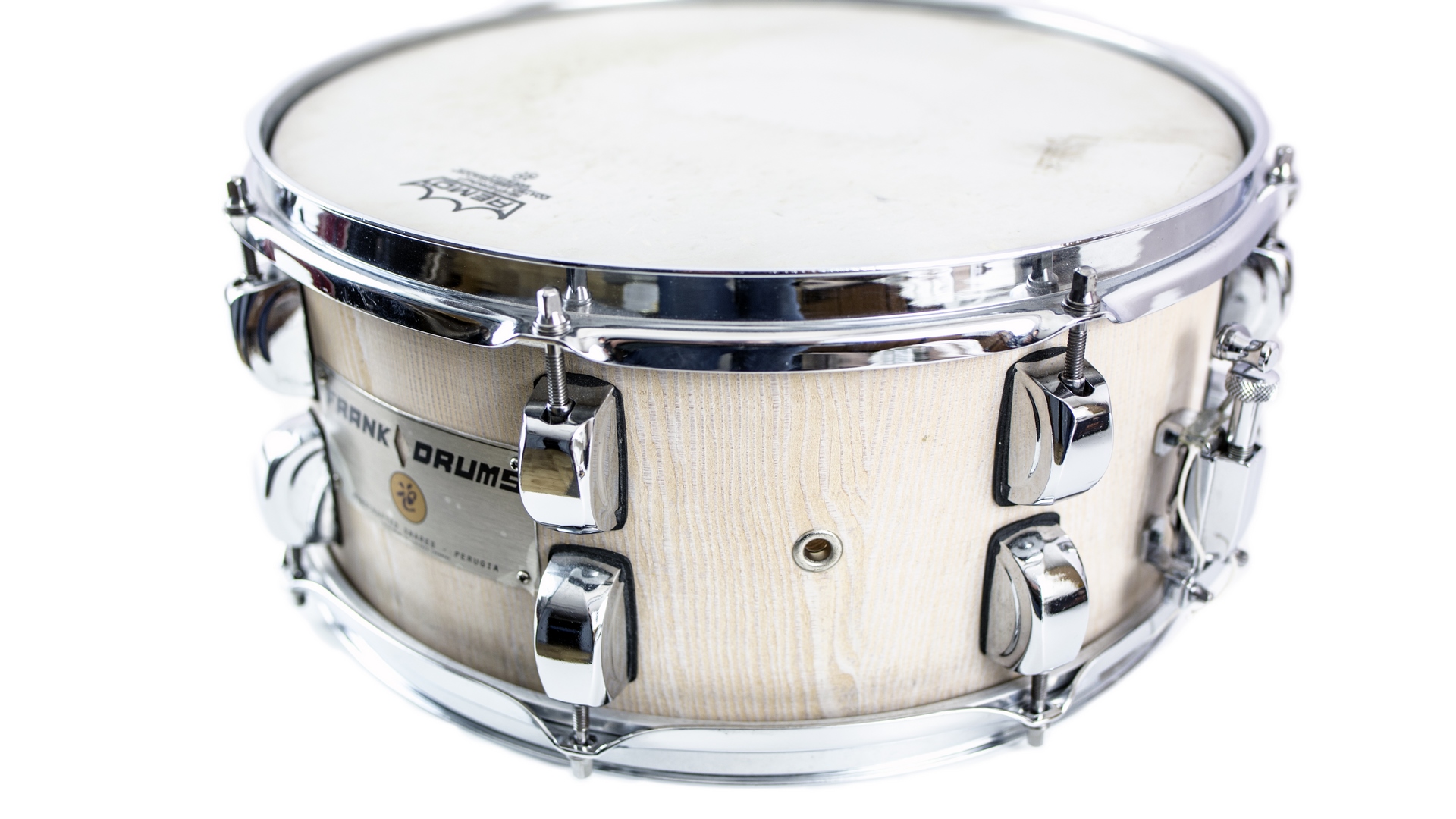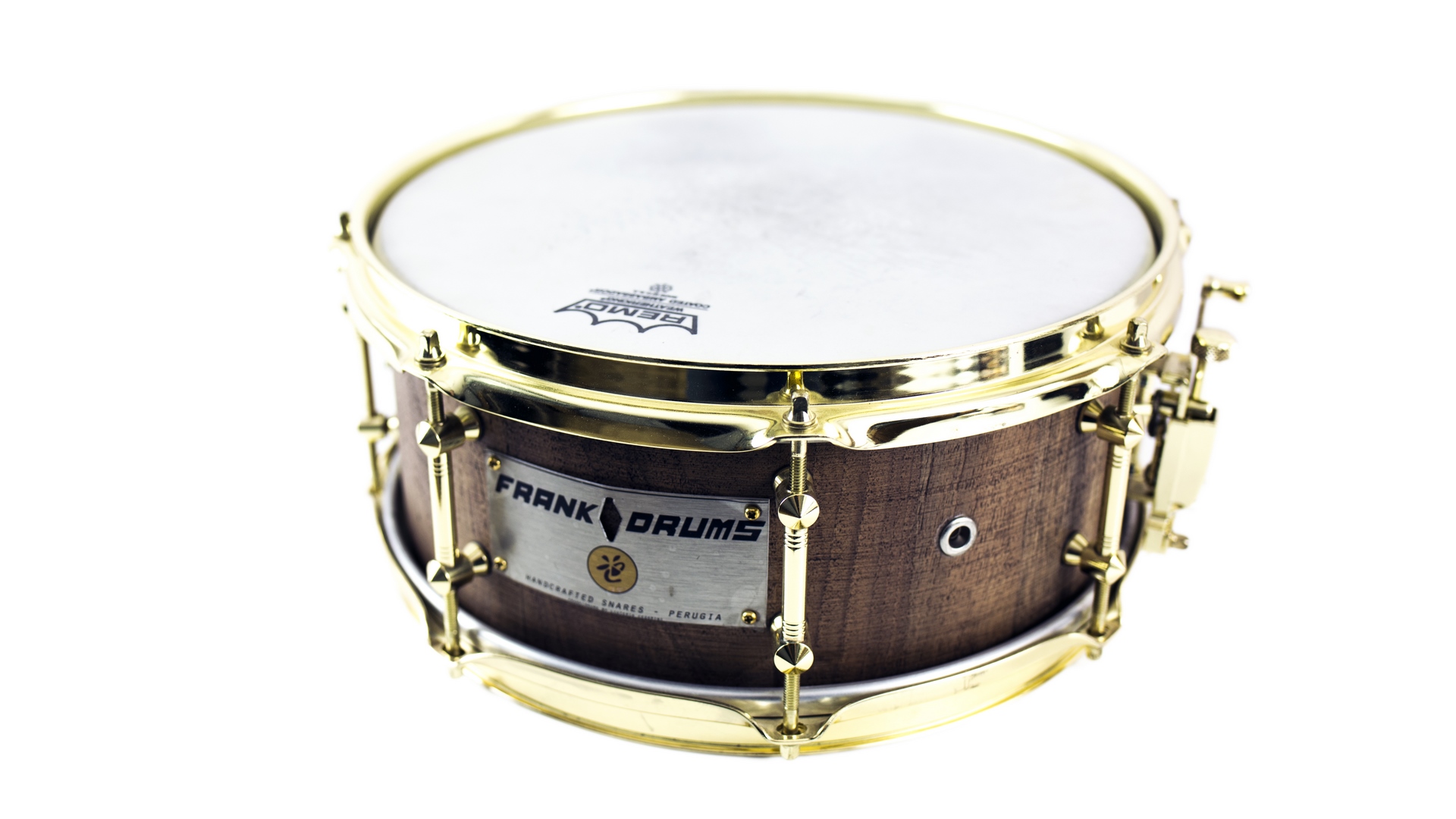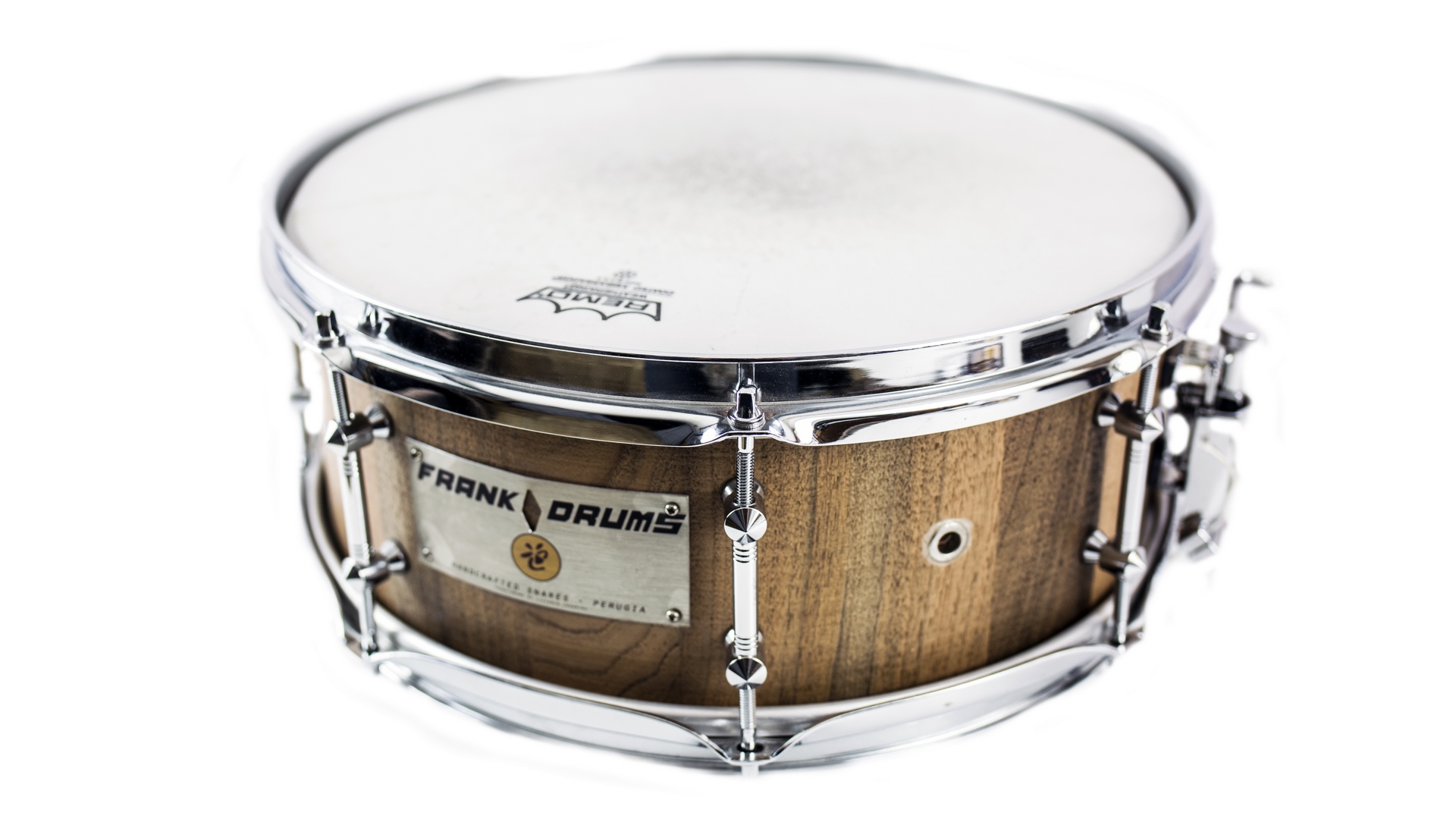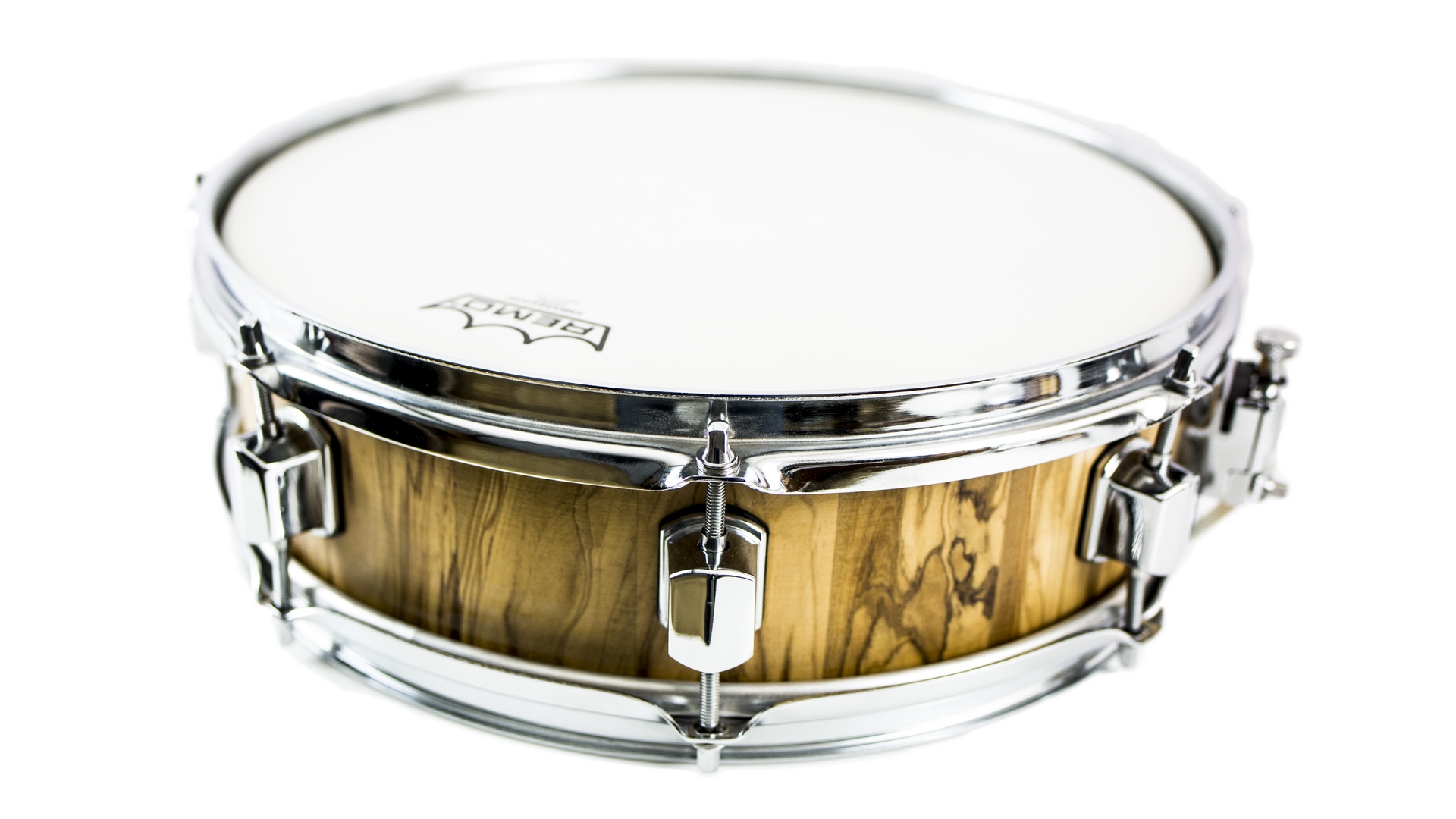Frankdrums
WHY THE ARTISAN SNARE DRUM?
This is the most common and understandable question.
The answer is simple: the snare is the heart and soul of the drums.
We could answer that craftsmanship is certainly more honest, eco-sustainable and original than the industry, but we don’t want to talk about principles. What interests us is the unique piece.
FrankDrums are certainly not snare drums designed for mass production, each snare drum is designed on its own. We are not interested in the “standard” that always works, but the original piece.
If the musician finds even one snare drum of interest to him, the goal will be achieved.
DRUM SLATS

Attack – Speed
Given that the sound of a shell must be transmitted in a perpendicular direction with respect to the skins, we can say that the stave offers the best sound transmission as it offers this direction of grain. For this reason, we do not want to reject any laminated production (direction of grain not perpendicular), but certainly set the relative distances.
DRUM THICKNESS (10-15MM)
Minor Resonance – Good Intonation – Attack
In terms of resistance the wood in slats (10-15mm thick) – which we do not tessellation – has a remarkable rigidity and elasticity. The plank cannot be broken, at most it can be unglued (as is the case with plywood), but in the case of plywood we cannot restore. In the case of the staves we can recover the frame with a simple operation.
A thick shell preserves the energy given at the moment of percussion better, its stiffness means a scarce dispersion of energy on the blank. The sound will be much more powerful, centered on the base note and the second consonant harmonic. Ideal in the studio, because it tunes well and does not have long dissonant notes.
On the contrary a thin shell tends to vibrate more if struck, this will lead to more resonance, so it will be less manageable. The resulting sound will therefore be lower in volume, as too much resonance leads to sound waves that are partially canceled (counter-phases), with a consequent loss of volume. For this a second air outlet is sometimes added.
SKINS FOR THICK DRUMS
The thick shell is much more sensitive than the thin one to the change of different skins, as the contribution to the overall sound of a thick shell is less, as it is less resonant. The choice of leather will therefore be important.
AIR VOLUME AND DIAMETER
Attack – Stamp – Resonance
The length of the shell mainly affects the response speed of the tailpiece and the duration of the note produced. With the variations in diameter we act on the stamp instead.
We make snare drums from 6 “to 15” in diameter.
RIM CORNER (BEARING EDGE) AND RIM REINFORCEMENTS
Attack – Dynamics – Resonance – Timbre
We make all kinds of corners.
At each corner correspond at least 2 types of bevels:
- round-over (the skin rests on more surface, less tension on the rim) more stopped, warm tone, more dynamic
- sharp (sharp edge, the skin exerts more tension on the rimmore volume, ringing tone, more sustain, less dynamic
- 45 ° angle modern very sustain – fast attack and immediate tailpiece response – dynamic depending on the bevel
- 30 ° angle vintage ’30 the softer corner creates a thicker, more consistent rounded-over area.
- Baseball Bat (Baseball Bat) vintage ’60
- Hybrid (soft on the beater and sharp “sharp” on the resonant)
WHERE DO WE GET THE WOOD FOR THE STAVES AND WHICH WOOD?
The choice of wood is actually the last to be analyzed because it depends on the chosen angle and the volume of air involved.
The wood emphasizes / limits the frequency range created, hence the overall tone of the instrument.
The wood is worked perfectly shaved inside, treated with drying oil, to create a perfectly reflective surface (we do not make snare drums with internal square faces).
“LIVE” PORE PAINT
Another strong point!
Our products, being made of solid wood, do not require a strong invasive painting.
With a thin finish the peculiarities of the frame remain “alive” because the pore of the wood is not closed.
CIRCLES AND CORDIERA, TENDICORDIERA
The circles are two flanges , usually made of metal ( steel , zinc , alloys) which are used to keep the hides in tension on the stem. In the circles there are “eyelets” that allow the tie rods (long steel screws) to adjust the tension of the skins, screwing them into the blocks (l object for anchoring to the barrel) by means of a special key (the same which, usually, is used to disassemble and reassemble the entire battery and to adjust pedals and mechanics). The number of rods varies, for 14 “snare drums, from eight to ten. However, there are also models equipped with a greater number of rods. With a greater number of rods the tension on the rim is more distributed and therefore the rim undergoes less flexion. This contributes to a more homogeneous skin tension, and therefore allows to obtain a more in tune sound. On the other hand, a greater number of blocks reduces resonance (each block is fixed to the frame by one or more screws).
Some companies have in production models of “free floating” snare drums, in which the tie rods allow to hold the hoops together and to tune the heads without drilling the drum shell. Compared to normal drum rims, the powerhoop (thicker) and the circles die-cast (diecast) maintain a certain rigidity during traction; they also have greater volume when used in the rimshot technique (which consists in hitting the beating skin and part of the circle at the same time with the stick).

Snare Frankdrums ex demo

Snare Frankdrums ex demo

Snare Frankdrums ex demo

Snare Frankdrums ex demo




